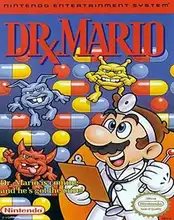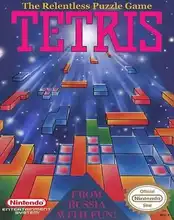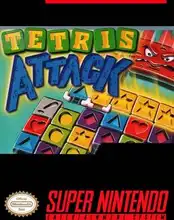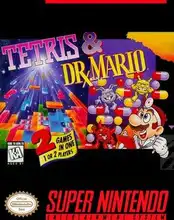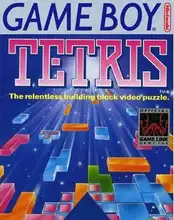The year was 1984. While arcades buzzed with flashy new cabinets and home computers were just finding their footing, a quiet revolution was brewing behind the Iron Curtain. Alexey Pajitnov, a Soviet software engineer, created a simple puzzle game based on geometric shapes. He called it Tetris. Little did he know, he had just unleashed one of the most influential, ubiquitous, and downright addictive video games ever conceived.
For anyone who grew up with a controller in their hand or spent countless hours staring at a monochrome screen, Tetris isn't just a game; it's a fundamental part of the gaming DNA. It's a pixelated rite of passage. But what is it about these falling blocks that has kept us rotating, shifting, and clearing lines for nearly four decades? Let's stack up the reasons why Tetris remains an absolute retro essential.
The Unlikely Origins of a Global Phenomenon
The story of Tetris is as wild and complex as a high-level game board. Born in a Soviet research lab, its journey to global domination involved smuggled copies, handshake deals, international legal battles, and a race to secure rights across multiple platforms, most famously for Nintendo's revolutionary Game Boy.
This bizarre licensing saga, detailed in fascinating documentaries and books, only adds to the legend. It wasn't just a game; it was a geopolitical hot potato. And out of that chaos emerged a game so pure, so perfect, it transcended borders, languages, and hardware limitations.
The Enduring Magic: Why Simple is Best
Look at Tetris. Four-block shapes (tetrominoes) fall from the top. Your goal: arrange them to form complete horizontal lines, which then disappear, making space and earning points. Fail to keep up, and the blocks stack to the top, ending the game.
It sounds almost too simple, right? But that's the genius.
- Easy to Learn, Impossible to Master: Anyone can grasp the basic concept in seconds. Yet, achieving high scores, managing speed increases, and planning complex multi-line clears (Tetris clears!) provides an endless skill ceiling.
- Pure Puzzle Satisfaction: The core loop taps into a primal human desire for order and completion. Fitting shapes together and watching lines vanish is incredibly satisfying.
- Timeless Design: There are no complex graphics, no convoluted controls, no intricate story. The minimalist aesthetic means it never looks truly 'dated' in the way many contemporaries do. Blocks are blocks.
- The Tetris Effect: It's one of the few games famous enough to have a psychological phenomenon named after it – where you see falling shapes and fitting patterns in the real world after playing for a long time. That's impact!
While many puzzle games of the era have faded or feel clunky, Tetris feels as fresh and engaging today as it did in the 80s.
More Than Just Falling Blocks: Its Impact
Tetris didn't just become popular; it created a genre. The puzzle game landscape we know today, from Dr. Mario (a fantastic, medically-themed cousin) to countless mobile match-three titles, owes a massive debt to the fundamental concepts Tetris popularized: falling pieces, matching elements, clearing lines/groups under pressure.
Its success on the Game Boy wasn't just a win for the game; it was a win for the platform. It proved that handheld consoles could deliver compelling, long-lasting experiences, helping make the Game Boy the global phenomenon it became.
Playing Tetris in the Retro Realm Today
Okay, so you're feeling that nostalgic pull. You want to experience the pure, unadulterated joy of classic Tetris. Where do you start in the modern retro age?
- Original Hardware: If you're a purist, tracking down a Game Boy with a Tetris cartridge is an iconic experience. The original NES version is also a classic, though primarily single-player (unless you find specific hacks or versions).
- Arcade Emulation: MAME offers access to various arcade Tetris versions, some with unique mechanics or competitive modes like Tetris: The Absolute: The Grand Master 2 PLUS (which even has a co-op 'Doubles' mode!).
- Console Ports & Collections: Tetris has been ported to everything. Look for classic collections on modern consoles or digital storefronts. Many include faithful versions of the NES or Game Boy originals.
- PC Classics: Older PC versions exist and can often be found on platforms like Archive.org or sometimes GOG. Playing a DOS version in DOSBox is a fun, authentic retro PC experience.
- Multiplayer Madness: Looking for competitive fun? The unlicensed NES Tengen Tetris is famous for its 2-player versus mode. SNES fans might enjoy Tetris Battle Gaiden with its character-specific power-ups. Finding which version suits your multiplayer needs is part of the fun for retro enthusiasts.
No matter how you play it, the core experience remains: you vs. the ever-increasing speed of the falling blocks.
A Timeless Challenge
Tetris is more than just a video game relic; it's a masterclass in design simplicity and addictive gameplay. It's a piece of history you can hold in your hands (or emulate on your screen) and instantly understand why it took the world by storm. For any retro gamer, or indeed any gamer at all, experiencing classic Tetris is essential. It's proof that sometimes, the most profound experiences come in the simplest shapes.
FAQ
Q: Which classic version of Tetris is considered the best? A: It's subjective! The Game Boy version is perhaps the most iconic due to its massive popularity and portability. The NES version is a home console staple. Competitive players often favor arcade versions like those in the TGM series or specific console ports like Tengen's NES version for its multiplayer.
Q: Is it legal to play old Tetris versions via emulation? A: The legal status of ROMs and emulation is complex and varies by region. Generally, downloading ROMs of games you don't own is considered copyright infringement. However, platforms like Archive.org offer many vintage PC versions that are considered 'abandonware' or have unclear rights, making them more accessible for historical play.
Q: Why is Tetris so addictive? A: Its addiction comes from a perfect storm of factors: simple rules, immediate feedback (clearing lines), increasing challenge (speed), clear goals (score, survival), and the satisfying visual/auditory cues. It constantly presents small, solvable problems under pressure.
Q: Are there modern versions that capture the classic feel? A: Yes, many modern versions aim to replicate the classic gameplay, often adding online multiplayer or new modes. However, for pure nostalgia and the original feel, playing the actual retro versions or accurate emulations is often preferred by enthusiasts.

